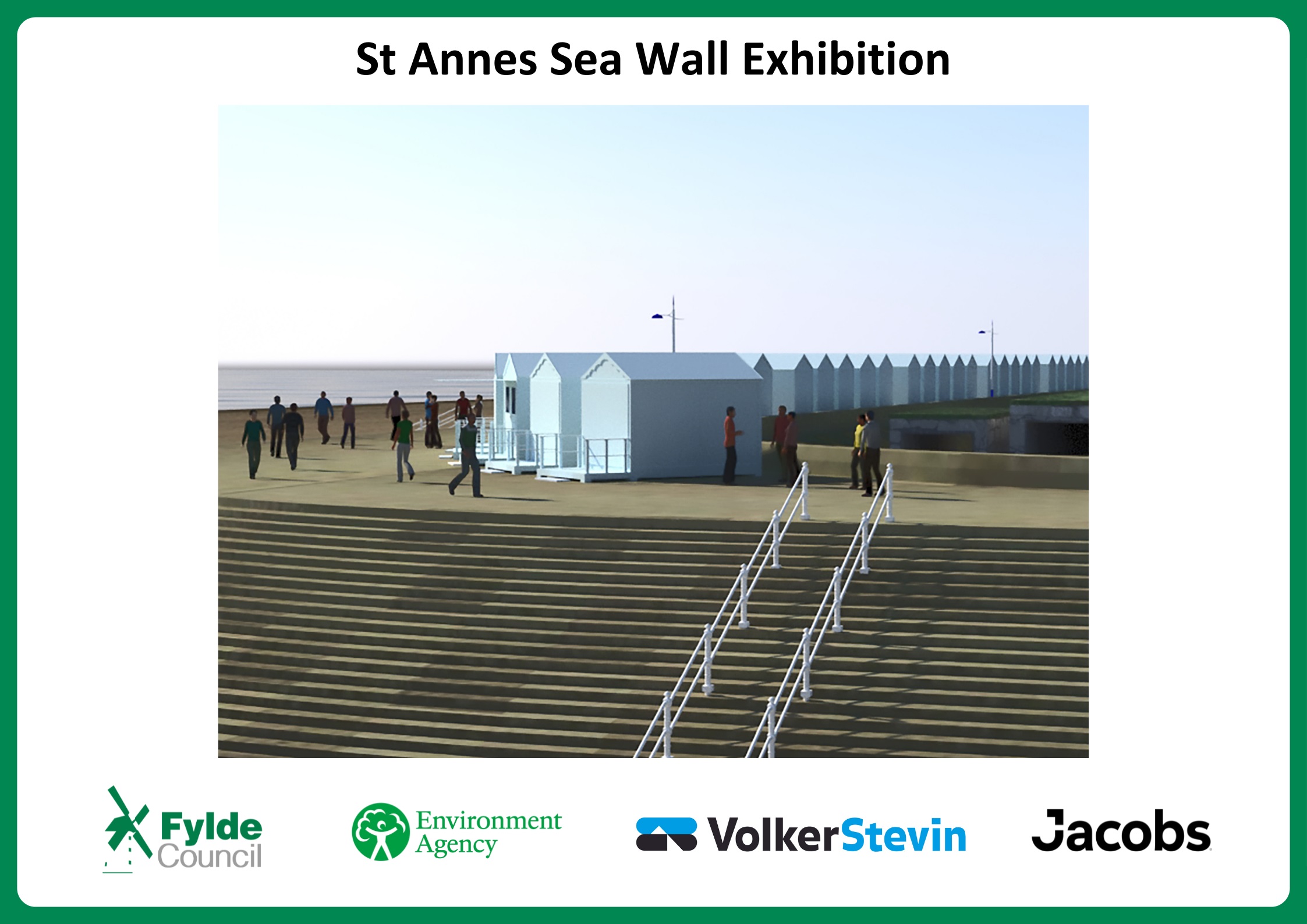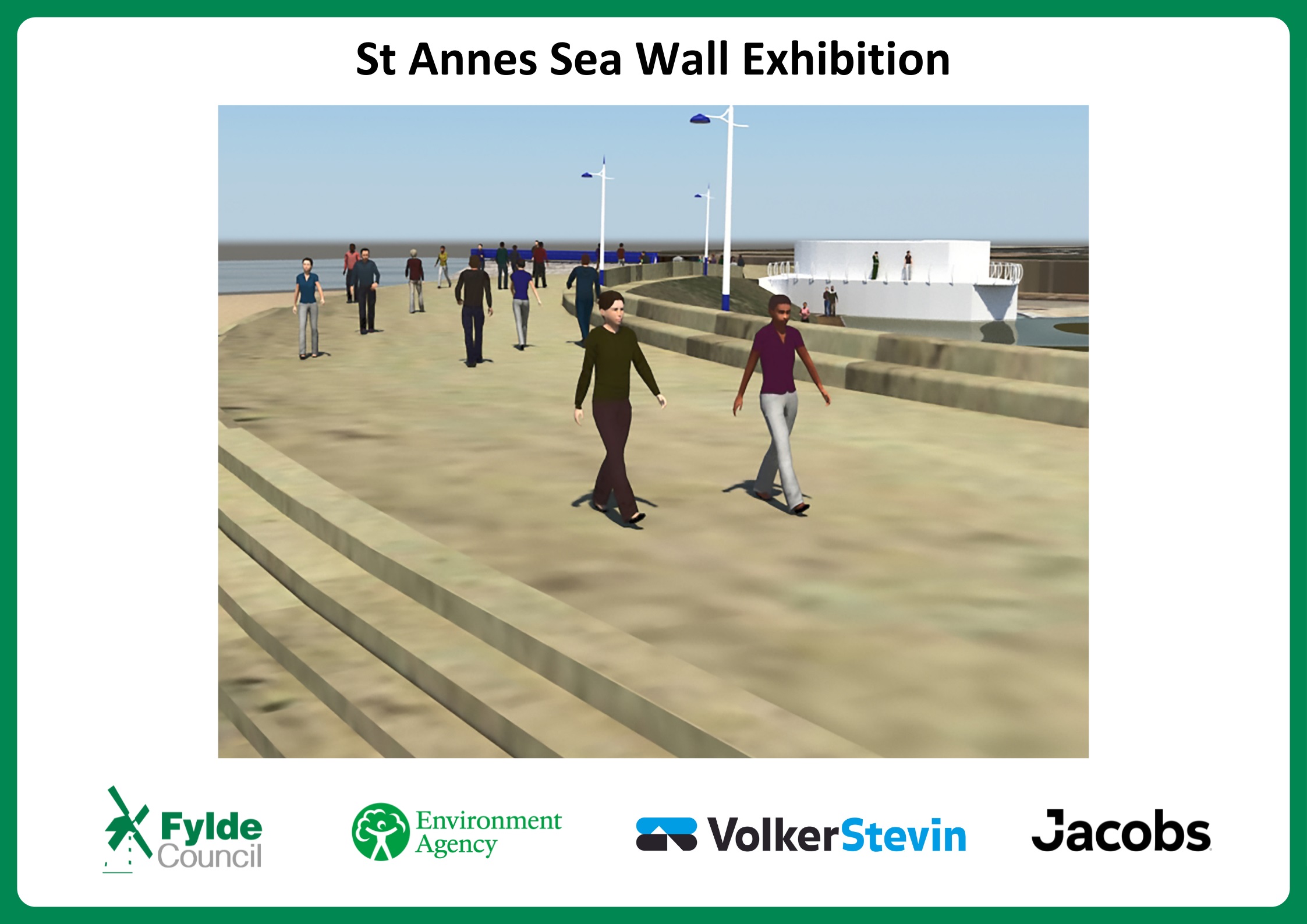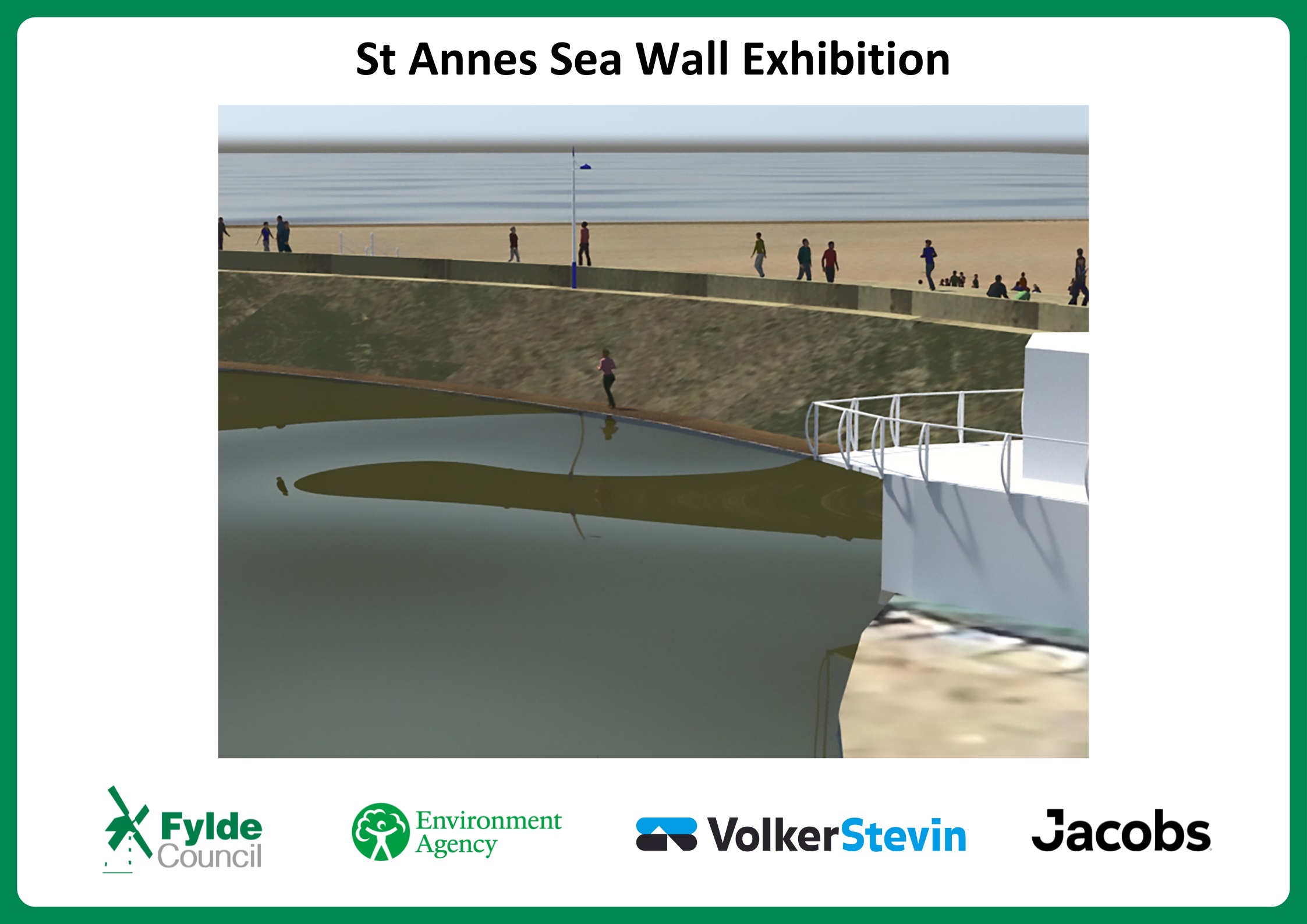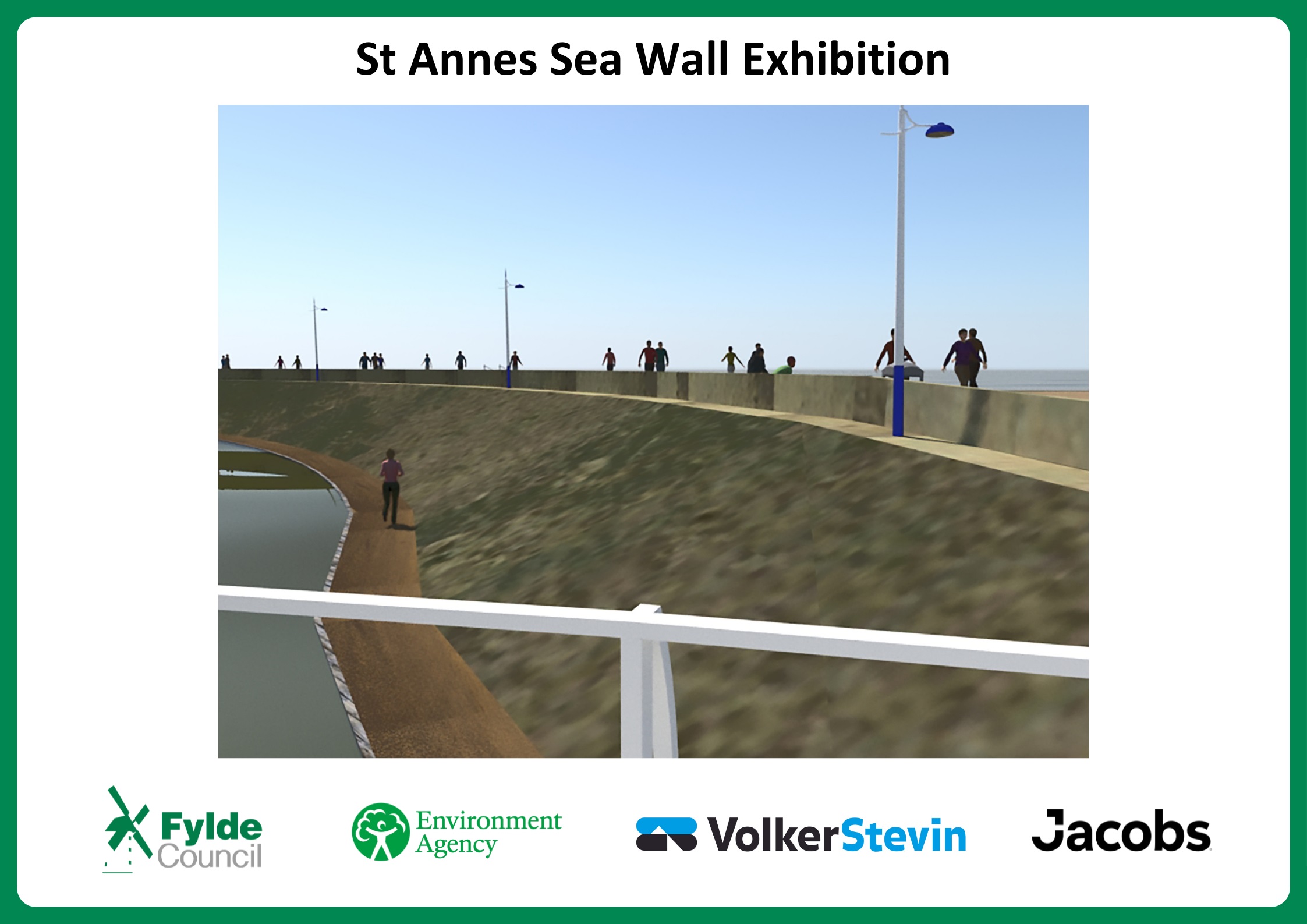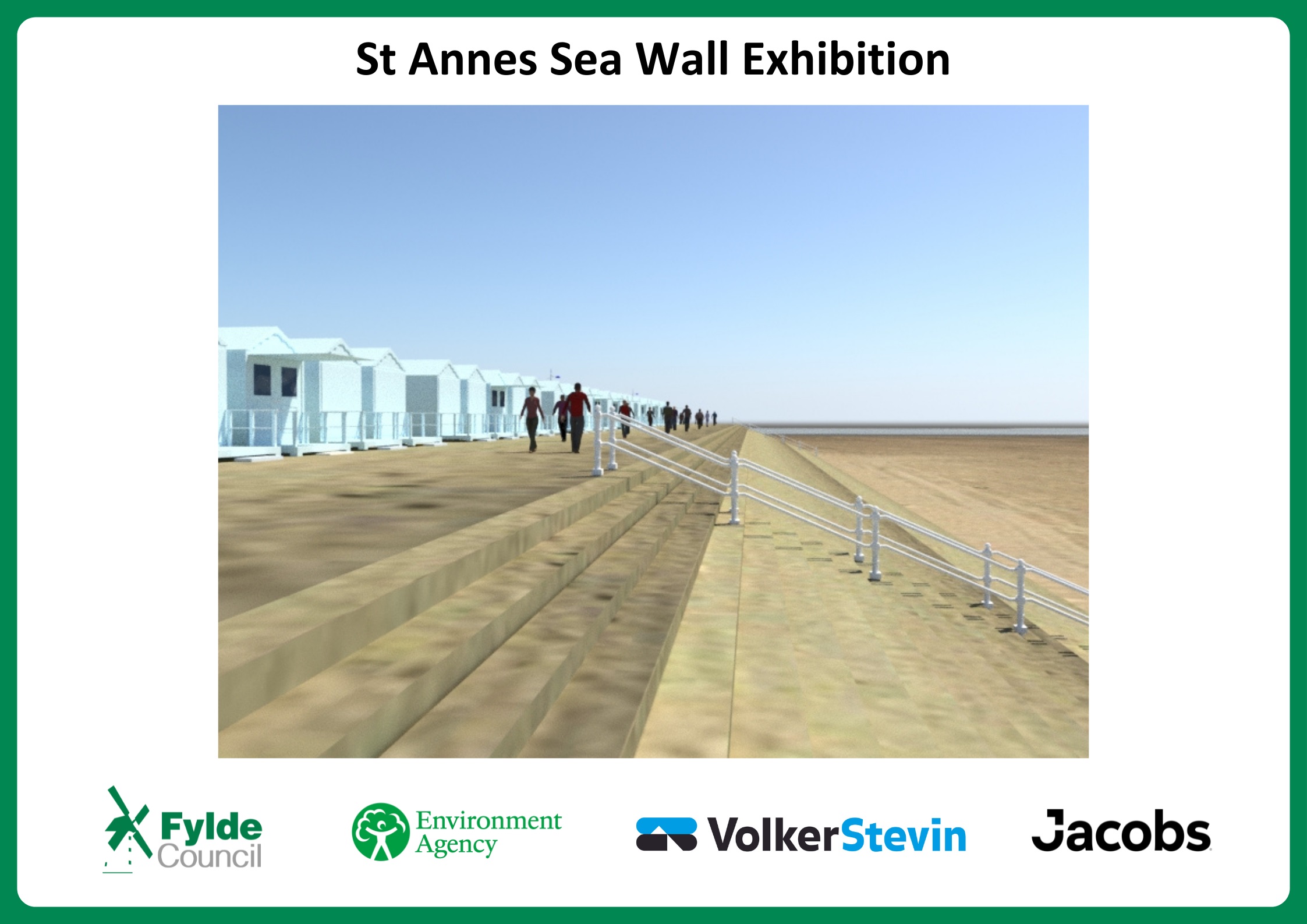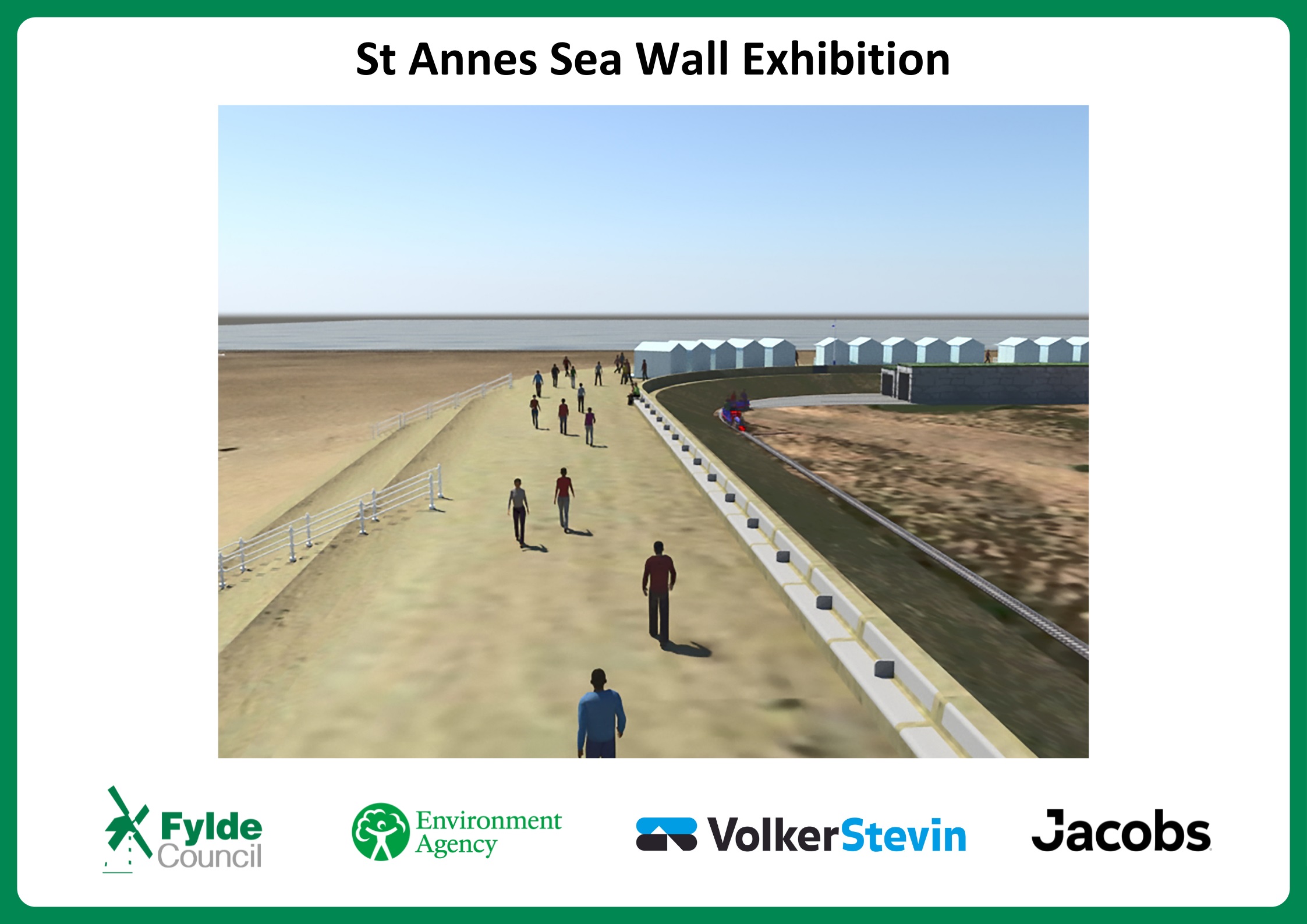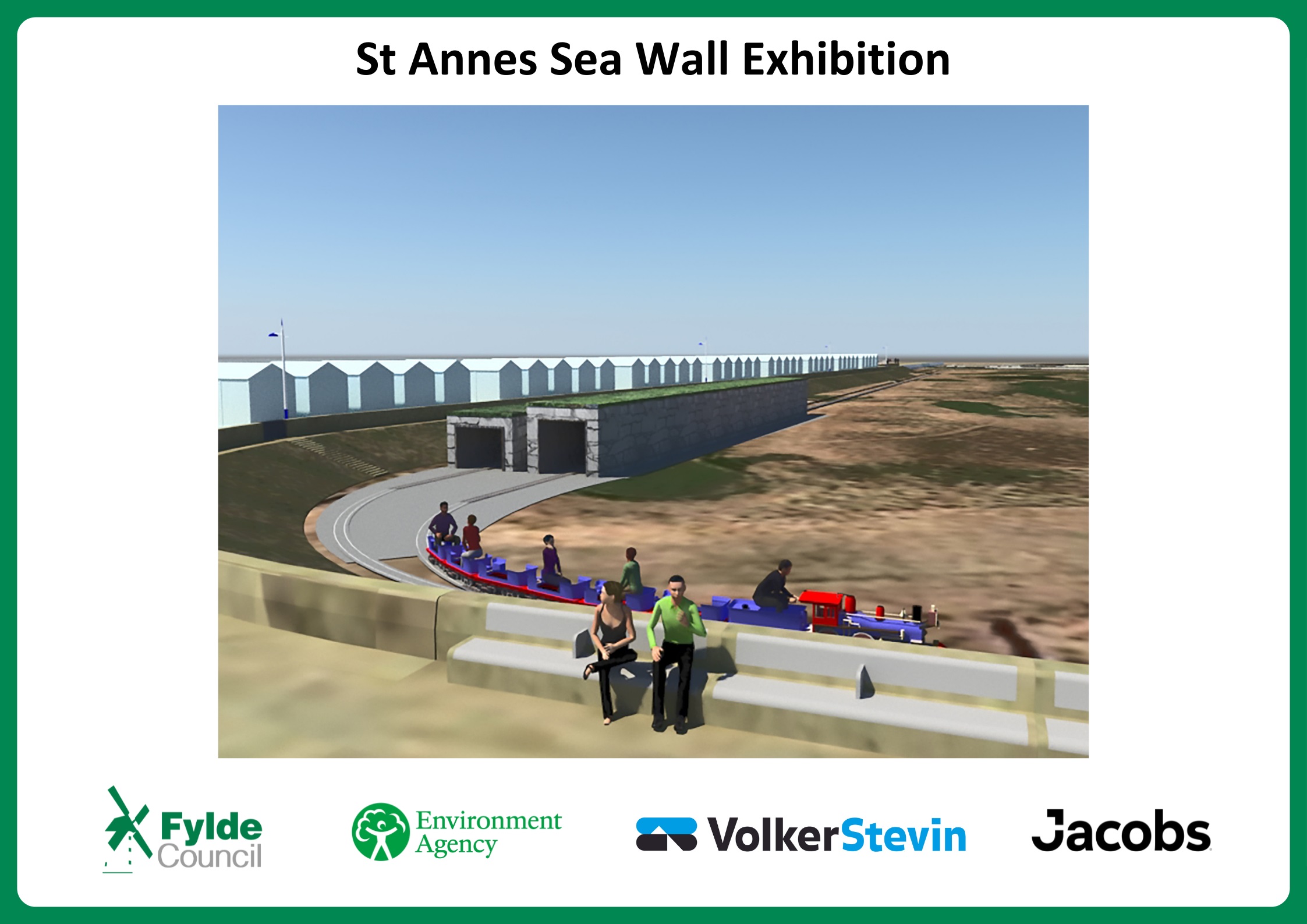Why do we need to update the sea defences at St Annes?
The existing St Annes Seawall, which was constructed around the Island site between 1934-1939, is approaching the end of its design life. It is at risk of overtopping, damage, and possible failure, and is too low when compared with current design standards and climate change predictions.
How do we know this?
Wave modelling has shown that the existing promenade level needs to be 2 metres higher than it currently is, and it needs to be backed by a 760mm high setback wall to protect local residents and businesses.
A new sea wall will protect the area from a 1 in 200-year storm, with climate change factored, in for the next 50 years.
It is then proposed to raise the promenade a further 1m in year 50 to provide a further 50-year design life (100 years in total with climate change), and flexibility has been allowed for this in the design.
The requirement for the increase in height now and in the future has presented design challenges in sympathetically tying it into the lower landward levels and retaining all the current amenities.
There has also been a need to provide flexibility for future St Annes Masterplan development proposals and to limit incursions into the beach and adjacent sand dunes.
The other major challenge is to minimize the impact on existing trading businesses and the public during the construction process, which is why a two-phased approach is proposed.
If you are having trouble viewing this video please click here
October 2020 – Work commenced on the Outline Business Case (OBC)
February 2021 – External communications were launched both online and in local print media, with over 1,000 letters sent to residents and businesses seeking their views.
80 stakeholders were invited to presentations and discussions over four meetings. Numerous individual meetings were held with key stakeholders directly affected by the proposed works.
May 2021 – Further external communications were launched with the website and notice boards being updated and 3-D visuals provided. Further meetings with individual key stakeholders took place who were again invited to further presentation and discussion. A feedback form was launched with 2,029 responses received.
Most of the feedback received recognised that a new sea wall was required but felt it was critical to retain all the current amenities such as the miniature railway, miniature golf, and beach huts just as they are now.
The preferred option after considering sixteen options was a buff-coloured stepped revetment, exposed aggregate promenade, and buff-coloured set-back wall. This was preferred primarily based on its efficient hydraulic performance, and its amenity aspect, permitting free access from the promenade to the beach.
July 2021 – The preferred option was approved by Fylde Council with a commitment for the Council to contribute £2.4m towards the project. This was then submitted to the Environment Agency for approval, with further external communications and notice board updates.
October 2021 – The Environment Agency approved the Outline Business Case (OBC) and agreed to fund up to £9.7m, with Fylde’s agreed contribution of £2.4m, totalling £12.1m.
October 2021- December 2021 – A topographical survey and ground investigation took place as well as continued meetings with key stakeholders.
March 2022 – Jacobs UK was appointed to carry out the detailed design and Volker Stevin was appointed to provide design support. This is programmed for completion by December 2022, at which point a planning and marine licence application will be made.
July 2022 – Press, media and notice boards were updated with the invitation to a public meeting to see the latest proposals, previously not possible due to Covid restrictions. The design will then be frozen, and a detailed design worked up.
June 2023– Should planning permission and marine licence be granted, then the contractor will be appointed for the works. A further public exhibition will then be planned for 2023.
Autumn 2023 – Autumn 2024 = Phase 1
Autumn 2024 – Spring 2025 = Phase 2

